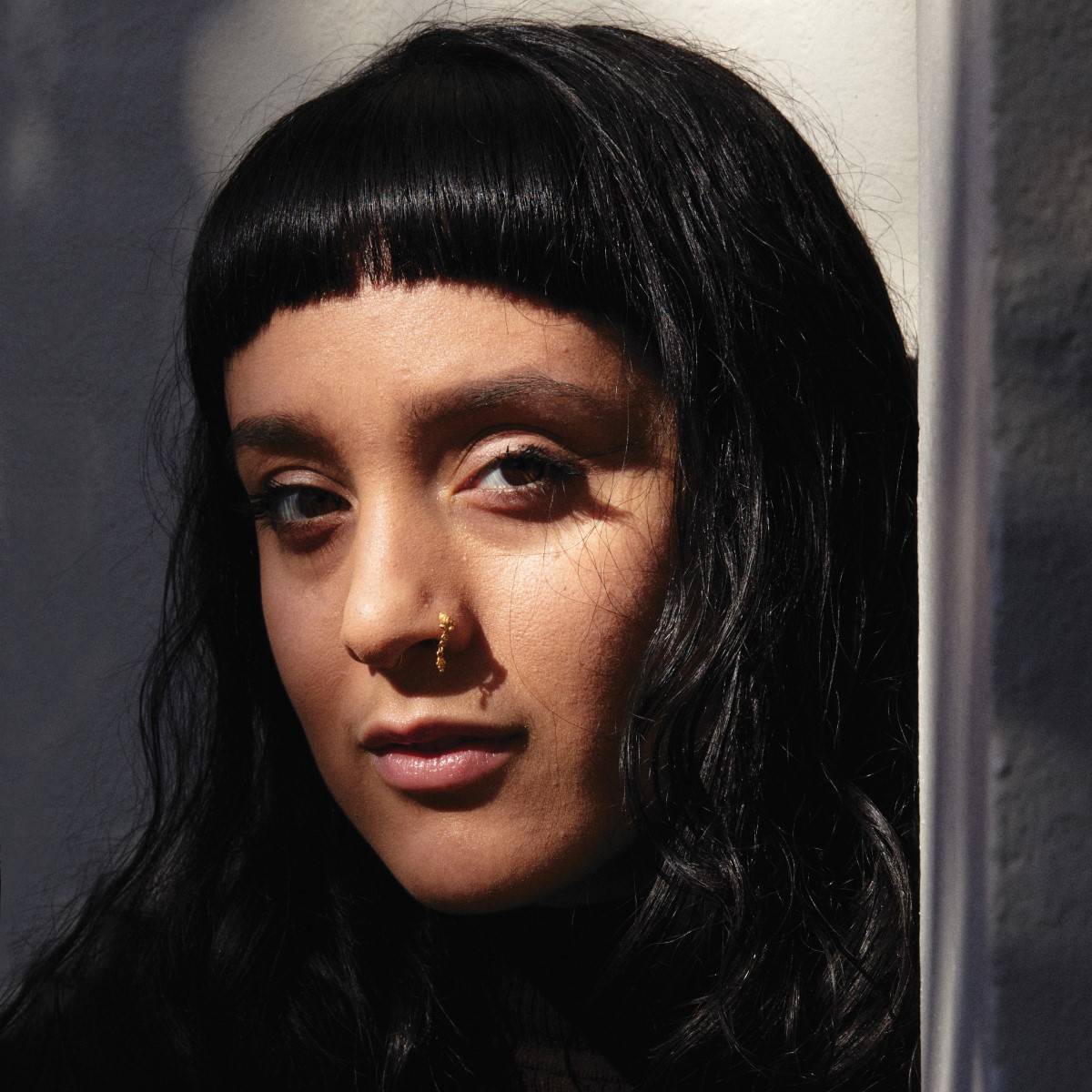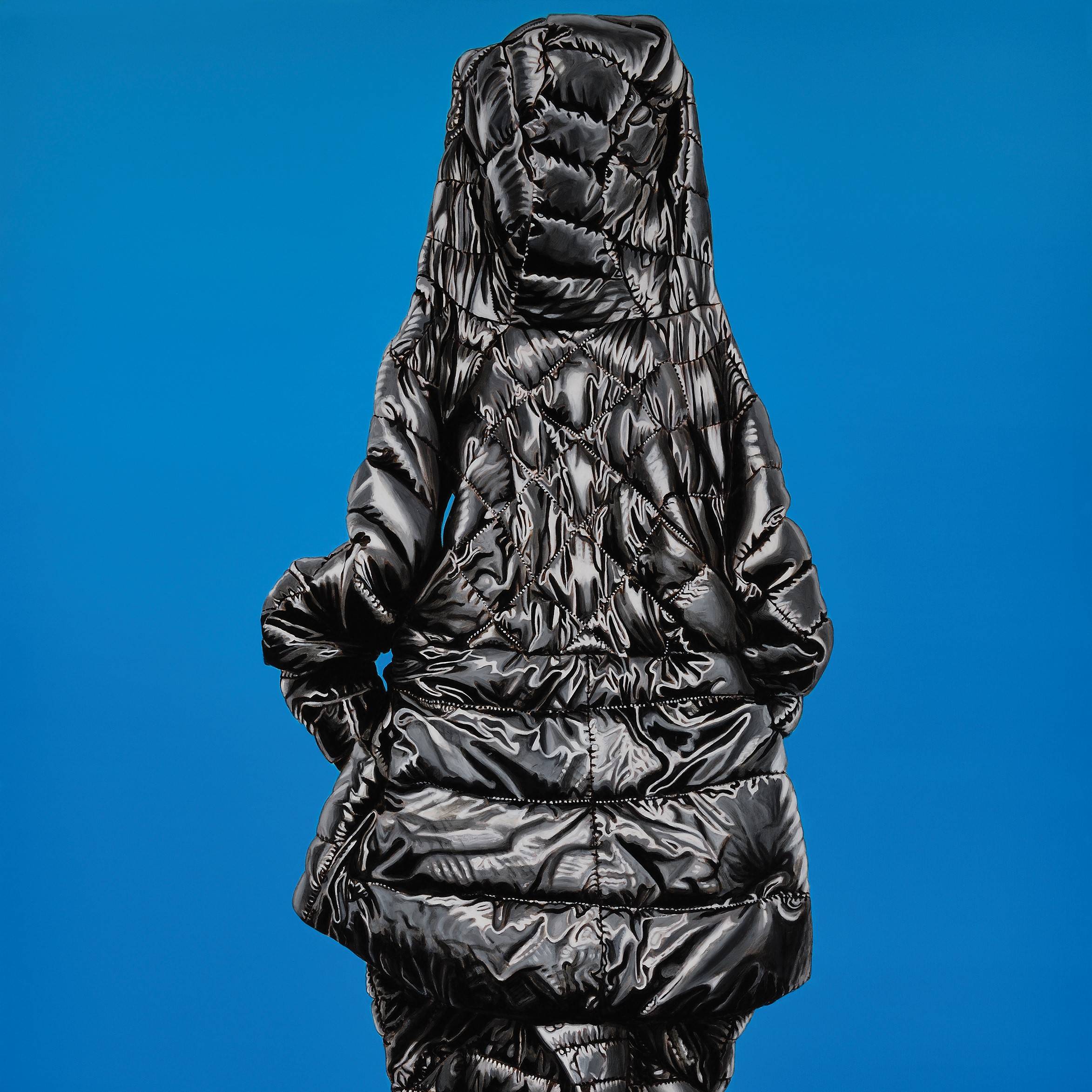Monica Rani Rudhar: Close Your Eyes
Through her work, Monica Rani Rudhar feels she is able to touch what is not there, see what is lost and feel what has passed.
Words: Mariam Ella Arcilla
Photography: Sam Armstrong
While attending a party in 2021, Monica Rani Rudhar panicked after realising one of her hoop earrings went missing. Gifted by her aunty, they had adorned her earlobes since birth. The Indian-Romanian artist, whose ancestors were goldsmiths and Ayurvedic healers, believes in the invocational magic of ornaments. “My Indian family treat jewellery as talismans for protection and embodiments of great love,” Rudhar says during my visit to her Dulwich Hill home studio in Sydney. Reuniting with her lost earring after a friend retrieved it became the catalyst for Rudhar to pursue an archive-driven practice informed by migrative family stories and cultural markers.
Born in South West Sydney to an Indian father and Romanian mother, Rudhar works across sculpture, video and performance. Littered throughout her studio are cultural emblems, earthenware paints, carving tools, and a laptop showing documentation photos of family heirlooms. Burnt-orange medicinal vessels with metallic decorations grace the shelves. A curtain-style work hand-sewn with star anise, cardamon and chillies – representing the South Asian spices used by Rudhar’s parents in their cooking – lies in the corner. Glistening blobs of gold-lustre-painted terracotta dominate the floor. Assembled together, they become gargantuan sculptural replicas of drop-earrings. “In their monumental scale,” Rudhar muses, “they represent the sentimental weight and labour required to hold onto my history whilst reforging and piecing together the fabric of my identity.” Her work titles and artist statements are inspired by family lore and conversations; they act as restorative autobiographical indexes – from cooking samosas with her mother to recovering lost artefacts – representing diasporic interrogations.
Since graduating in 2021 from a Bachelor of Fine Arts at the University of NSW, Sydney, the artist has exhibited in group shows at Pari gallery and Verge Gallery, both in Sydney, and Tamworth Regional Gallery. In early 2023, Rudhar received the Gosford Emerging Art Prize and became a recipient of the Art Incubator program, which offers artists exhibitions in partnership with commercial galleries. Rudhar will present at Martin Browne Contemporary this October, her first commercial stint after staging solos at Sydney’s Firstdraft, Tiles and Our Neon Foe. Art Incubator founder Teresa Biet recalls the moment she visited Looking at Gold, curated by Luke Létourneau at Casula Powerhouse in 2022, and witnessed Rudhar’s mega-sized twinned earrings. “This literally stopped me in my tracks,” Biet tells me, “they were ambitious, complex and executed with great skill.”
For the October show, Close Your Eyes And Hold Out Your Hand, Rudhar will include a recreation of the floral earrings that once belonged to her father’s mother, now passed down to Rudhar. The exhibition title derives from a line uttered by her aunty at a wedding as she nestled the objects into Rudhar’s palm. On her smartphone, Rudhar shows me a grainy image of the diamond-encrusted gold stud: “I’m worried about losing the actual earrings,” she squirms, “so they’re at my parents house for safe-keeping.” Splayed across her studio table is the ceramic skeleton of Dadi Ji’s Earrings (bearing the Punjabi words paternal grandmother), which currently resembles a lofty brown octopus with six swirling arms – serendipitously, her grandmother raised six children. Eventually, this will be fashioned into a pair of 24-carat-gold-coated sculptures to besparkle her grandmother’s bigger-than-life personality. Dominic Kavanagh, Martin Browne Contemporary’s Associate Director, references her process as being “grounded in multi-generational relationships, stories and practices.” Even though Rudhar is in her early-career stage, Kavanagh notes she has, “managed to take on this inter-generational weight with confidence and maturity to produce works of impressive emotional and visual impact.”
Indeed, Rudhar’s voice crackles with sentiment as she tells me about her grandmother, a progressive herbalist and doula whose goldsmith lineage inspired Rudhar to pursue her own artistic endeavour.
“Although I never got to meet my grandmother, she’s always been a presence in my life,” reveals Rudhar, adding that her grandmother planned to leave India in 1993 to join their family in Australia – until she suffered a heart attack before boarding the plane. “I made my first artwork as a way to grieve and honour her,” Rudhar confides. “And I chose ceramic because it’s a fragile and everlasting material – much like oral stories passed down through generations.”
LUKE LÉTOURNEAU
Curatorial and Collections Lead, Casula Powerhouse Arts Centre
“I first met Monica Rani Rudhar in 2021 when she was a finalist in the 66th Blake Prize at Casula Powerhouse. The work featured a long take of the artist, dressed in a green and red sari, dancing through a field of mother-of-millions flowers off Whitford Road in Green Valley. The score was provided by an aunt, who sang a prayer that was recited by the artist’s grandmother every morning to grieve her husband. It is a poetic work which presents a complicated picture of family and mourning.
“I later commissioned Monica to make Hoops That Once Belonged To My Mother and Drop Earrings That Once Belonged To My Mother, two works made from terracotta and coated in gold lustre. The works were recreations of earrings meant to be heirlooms passed down to her but instead found their way into the hands of other family members. Again, the work is both heartbreaking and breathtaking – Monica is channelling unspeakable family tensions through alluring imagery.
“Monica is building a profile through artworks that capture the sensations of the heart. Intimacy and heartbreak, guilt and desire, loss and longing – these are all feelings which get lost and confused in words, but through her artworks, she creates a visual language of recognition and acknowledgment.
“Her works often negotiate the feelings of connection and disconnection to her heritage. She has worked with many media including video and performance, however her recent works in ceramic have been the strongest to date. What is especially powerful is her desire to recreate lost heirlooms in clay – as the clay requires the continued moulding and caress of the hand, she is able to finally touch and hold all the possessions and emotions that are otherwise out of reach.”
DOMINIC KAVANAGH
Associate Director, Martin Browne Contemporary, Sydney
“This is Monica Rani Rudhar’s first ever solo exhibition at a commercial gallery. Her powerful sculptures are grounded in multi-generational relationships, stories and practices. Martin Browne Contemporary has a rich history of working with ceramic artists and we are excited to share the work of an emerging artist who is producing singular and memorable artworks with such confidence.
“As Monica’s first foray into the commercial market , it will be priced as such, with works between $2,000 and $11,000.
“Monica’s work will appeal to all discerning collectors. The pieces are beautiful objects that have been wrought with skill and contain a rich multivalent history.”
This article was originally published in Art Collector issue 106, October-December 2023.









